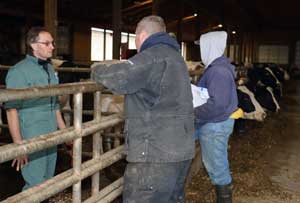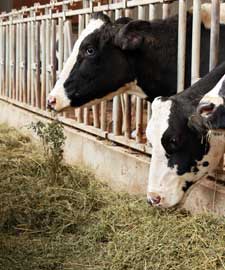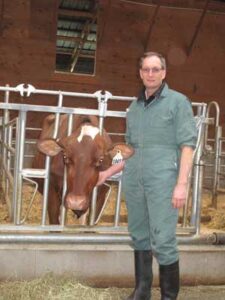 Results vary from farm to farm and program to program however, donors tend to respond similarly flush to flush. If your donor does not respond to hormones, or fails to produce viable embryos on her first try, we can modify her program on a subsequent super-ovulation and quite often achieve good results.
Results vary from farm to farm and program to program however, donors tend to respond similarly flush to flush. If your donor does not respond to hormones, or fails to produce viable embryos on her first try, we can modify her program on a subsequent super-ovulation and quite often achieve good results.
The following figures are averages only, and do not constitute a guarantee of results. That being said, on average, 6 viable embryos can be collected from each flush (range 0-60). This generally achieves a 75% pregnancy rate with fresh transferred embryos. Sexed embryos show a similar fresh transfer pregnancy rate if the recipients are properly selected and managed.
Should you have more embryos than recipients, we will freeze the best embryos and transfer the rest to fill the suitable recipients.
Embryos can be frozen and stored indefinitely. Any manipulation of embryos including freezing can reduce the embryo survival rate, but because the best embryos are frozen, pregnancy rates are essentially identical to that of fresh embryos. Sexed frozen embryos show a slight drop in pregnancy rate compared to unsexed frozen embryos, however we consistently obtain satisfactory pregnancy rates with these embryos as well.




 For consideration in the ET program, all donors should undergo the following to ensure their suitability:
For consideration in the ET program, all donors should undergo the following to ensure their suitability: As a rule of thumb, the donor and recipient cattle should be on a rising plane of nutrition to achieve maximum embryo fertility and pregnancy rates.
As a rule of thumb, the donor and recipient cattle should be on a rising plane of nutrition to achieve maximum embryo fertility and pregnancy rates. Seven days after breeding, the staff of AVC/CPGC will come to your farm to carry out the embryo collections, embryo sexing, embryo transfers and if necessary embryo freezing. The day and date of the flush is shown on the donor program.
Seven days after breeding, the staff of AVC/CPGC will come to your farm to carry out the embryo collections, embryo sexing, embryo transfers and if necessary embryo freezing. The day and date of the flush is shown on the donor program. Results vary from farm to farm and program to program however, donors tend to respond similarly flush to flush. If your donor does not respond to hormones, or fails to produce viable embryos on her first try, we can modify her program on a subsequent super-ovulation and quite often achieve good results.
Results vary from farm to farm and program to program however, donors tend to respond similarly flush to flush. If your donor does not respond to hormones, or fails to produce viable embryos on her first try, we can modify her program on a subsequent super-ovulation and quite often achieve good results.